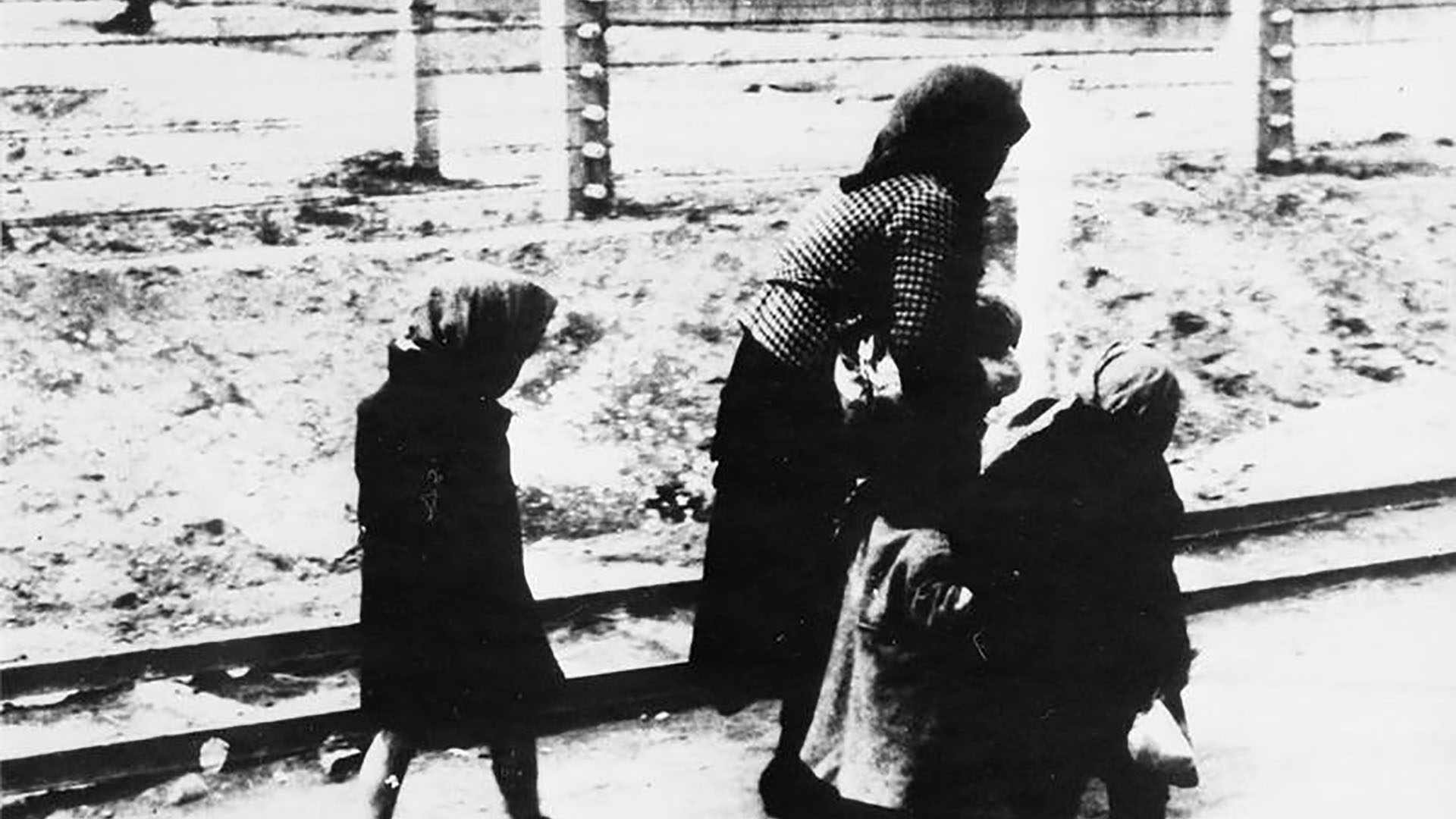In February 1946, planes touched down at R.A.F. airfield in Northern Ireland. On board were children, sitting nervously and quietly. They had flown from Prague in the former Czechoslovakia and endured rough and noisy flights to Northern Ireland. This was nothing compared to conditions they had endured in recent times.
On 24th February 1946, 25 young survivors of the horrors of the Nazi concentration camps arrived in Northern Ireland. The Jewish refugees arrived at R.A.F. Sydenham, Belfast on board a Douglas Dakota piloted by Flight Lieutenant Alexander Appleby of the Royal New Zealand Air Force. Their journey from Prague in the former Czechoslovakia lasted 7.25 hours. Appleby’s crew consisted of Wing Commander Carey, Flight Lieutenant J. Reid, Flight Lieutenant Patrick Flynn, and Warrant Officer Selwyn Jones.
The First Refugees Arrive
This first flight brought 13 girls and 12 boys aged between 12 and 16 years old along with Miss R. Fellner – Secretary of the Jewish Refugee Central Committee in London, England. Among the children were 2 sets of twins and several siblings. A welcome party from the Belfast Jewish Community awaited the arrival of the plane. They included Leo Scop (Chairman of the Millisle Refugee Settlement), Maurice Solomon (Treasurer), and Barney Hurwitz (President of the Belfast Jewish Community). Refreshments came from Mrs. Scop, Mrs. H. Peres, Mrs. M. Coppel, Mrs. G.N. Wallace M.B.E. (Vice Chairwoman of the W.V.S. in Northern Ireland), and other members of the Womens’ Voluntary Service. Among them were Mrs. Martin, Mrs. Winnington, Miss Broderick, and Mrs. F.C. Wallace (St. John Ambulance).
The volunteers prepared hot drinks, sandwiches, and buns for the new arrivals. As well as this, they provided each child with a kit bag containing emergency clothing and toiletries. After this warm welcome, the Jewish refugees boarded transport to their new home in Millisle, Co. Down.
The greatest care had been taken in their choice for these children who unlike ordinary boys and girls are shy of bright colours or gay patterns. Anything distinctive – stripes, checks, or colours – recall to them the distinguishing marks of the concentration camps and so these Polish strangers will wear sober, rather dull clothes until time eliminates their associations with brighter ones.
Northern Whig Newspaper – 25th February 1946.
On arrival by bus at Ballyrolly House Millilse, Co. Down, a welcoming party awaited. The union flag flew alongside Jewish emblems and a welcome banner hung from the gates. Older refugees on the camp had prepared a meal of soup, fried egg, potato, cabbage, pudding, and coffee. After eating, they sang some traditional national songs.
More Refugees Arrive in Ulster
On 27th February 1946, another 25 refugees arrived at R.A.F. Sydenham, Belfast. Squadron Leader Baker landed his Douglas Dakota also having flown from Prague in the former Czechoslovakia. From the airfield in East Belfast, the refugees travelled onwards to the Kinderfarm at Ballyrolly House, Millisle, Co. Down. The group of 17 boys and 8 girls aged between 15 to 17 years old, joined others at the Co. Down safe haven. Before travelling to Northern Ireland, groups in Prague had looked after the young Jews and they were in reasonable health.
Kindertransport in Northern Ireland
Most of those on both flights had spent time in camps at Auschwitz and Belsen. A few others had fled persecution and lived in hiding. All the young people were stateless and officials could only guess at their country of origin based on accent and dialect. Authorities suggested most were from Ukraine or the Carpathian Provinces. What was clear, was that most if not all, had lost their entire families, spoke little or no English, and needed the help of the Northern Irish people.
The aim of the Belfast Jewish Community was to settle the young people at the Kinderfarm at Ballyrolly House, Millisle, Co. Down. The community had volunteered to take up to 100 young people and educate and train them in agriculture and other trades. After a few years in Northern Ireland, they would move on to wherever permanent homes could be found.
Among those young children brought to Ulster was Victor Greenberg, who fondly recalled his time in Northern Ireland. Another young man on the plane was Wilem Frischmann. Since, awarded a C.B.E., he became a renowned structural engineer and father of the musician Justine Frischmann. Others such as Alex Friedmann went on to run successful businesses in the United States of America.
The story of these refugees features in ‘The Boys, Triumph Over Adversity’ by Sir Martin Gilbert, published by Weidenfeld & Nicolson.
